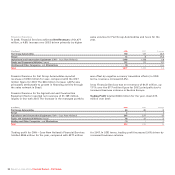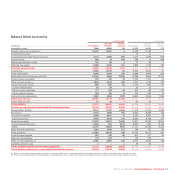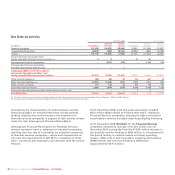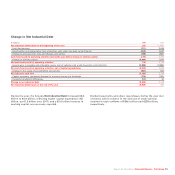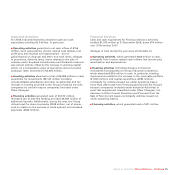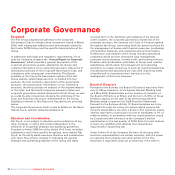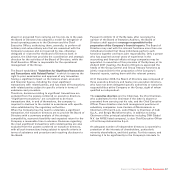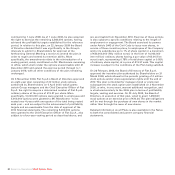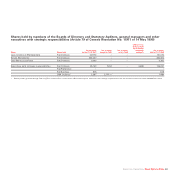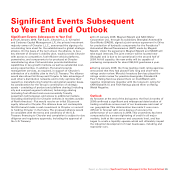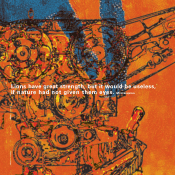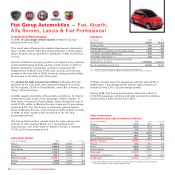Chrysler 2008 Annual Report Download - page 61
Download and view the complete annual report
Please find page 61 of the 2008 Chrysler annual report below. You can navigate through the pages in the report by either clicking on the pages listed below, or by using the keyword search tool below to find specific information within the annual report.Report on Operations Corporate Governance60
the Parent Company ensures a system of efficient exchange of
information and conducts the necessary coordination with the
activities of its subsidiaries, the majority of which are
organised into Sectors. The second relates to detailed
operating policies and procedures at Sector level, based on
guidelines provided by the Parent Company, and implemented
by the individual legal entities.
In parallel, assessment and monitoring of the system of
internal control over financial reporting has been implemented
consistent with the model established in the COSO Framework
and follows a ‘top-down, risk-based’ approach, which is in line
with international best practice. As part of that process, tests
are carried out by management, which are accompanied by
quality reviews of the design and functioning of those controls,
and tests are also conducted independently by Internal Audit.
The ‘top-down, risk-based’ approach adopted by the Fiat Group
enables management to conduct its own assessments focusing
on areas of greatest risk and/or materiality in relation to the
financial reporting system.
Documents and financial information regarding the Company
continue to be disclosed, including via the internet, in accordance
with the provisions of the Disclosure Controls & Procedures
adopted in the past in conformity with the US regulation.
Board of Statutory Auditors
As required by Article 17 of the By-laws, the Board of Statutory
Auditors is comprised of three regular auditors and three
alternates, all of whom must be entered in the Register of
Auditors and have at least three years’ experience as a
statutory account auditor. They may also hold other positions as
director or regular auditor within the legal and regulatory limit.
The Board of Statutory Auditors, following resignation of the
regular member Cesare Ferrero and alternate member Giorgio
Giorgi on 15 May 2008, is currently composed of: Carlo
Pasteris, Chairman; Giuseppe Camosci and Piero Locatelli,
regular auditors; and, Roberto Lonzar, alternate auditor.
The Board of Statutory Auditors’ current term of office expires
on the date of the forthcoming General Meeting of
Shareholders called to approve the 2008 Financial Statements.
Below is a list of the most significant positions held by the
members of the Board of Statutory Auditors. In compliance
with legal and regulatory requirements, more complete
information is provided in the Report of the Board of Statutory
Auditors on the 2008 Financial Statements. Carlo Pasteris is
Chairman of the Board of Statutory Auditors of Toro
Assicurazioni S.p.A., Augusta Assicurazioni S.p.A., Augusta Vita
S.p.A., De Agostini S.p.A., B&D Holding S.a.p.A. and a director
of Ferrero S.p.A.; Giuseppe Camosci is Chairman of the Board
of Statutory Auditors of Samsung Electronics Italia S.p.A., and
a regular auditor of Trussardi S.p.A., Finos S.p.A., Locafit S.p.A.
and WestLB (Italia) Finanziaria S.p.A.; Piero Locatelli is a
regular auditor of Giovanni Agnelli & C. S.a.p.A.
Pursuant to Legislative Decree 58/98 and in accordance with
Article 17 of the Company’s By-laws, appropriately constituted
minority groups have the right to appoint one regular auditor,
who shall serve as Chairman, and one alternate auditor. In
accordance with the By-laws, an equity interest no lower than
that required by law for the submission of lists of candidates
for the appointment of the Company’s Board of Directors is
required for the submission of a list of candidates to the Board
of Statutory Auditors. In accordance with the communication
issued by Consob and with reference to the Company’s market
capitalisation in the last quarter of 2008, the required minimum
percentage is currently 1% of ordinary shares. The lists
presented, together with the documentation required by law
and the Company’s By-laws, must be deposited at the
Company’s registered office at least fifteen days prior to the
date set for the Meeting on first call, or, in specific cases, up to
five days after that date. The Board of Statutory Auditors was
elected by Shareholders on 3 May 2006 using the voting list
system. In particular, the regular auditors Giuseppe Camosci
and Piero Locatelli, who was substituted for Cesare Ferrero on
15 May 2008, were drawn from the list presented by the
majority shareholder IFIL Investments S.p.A. and Carlo
Pasteris, who was appointed Chairman of the Board of
Statutory Auditors, was drawn from the minority list receiving
the highest number of votes. That minority list was presented
jointly by the Generali Group and Mediobanca, which at the
time were holders of 2.7% and 1.8% of the Fiat ordinary shares,
respectively. Upon accepting his candidacy, Carlo Pasteris
resigned from his position as common representative for the
holders of savings shares. Additional information provided to
Shareholders on candidates and lists presented are still
available in the Investor Relations section of the Group website
(www.fiatgroup.com).


